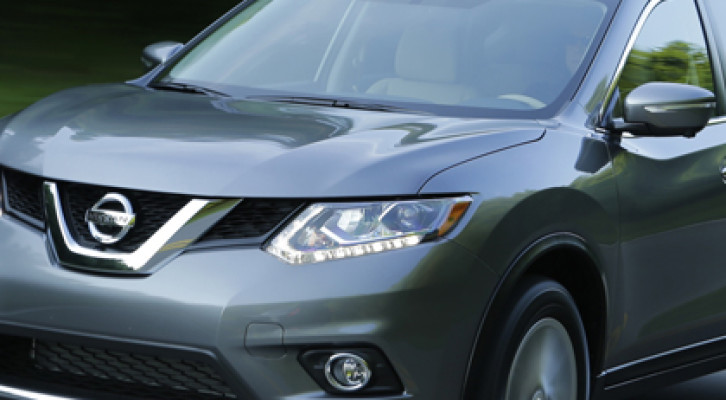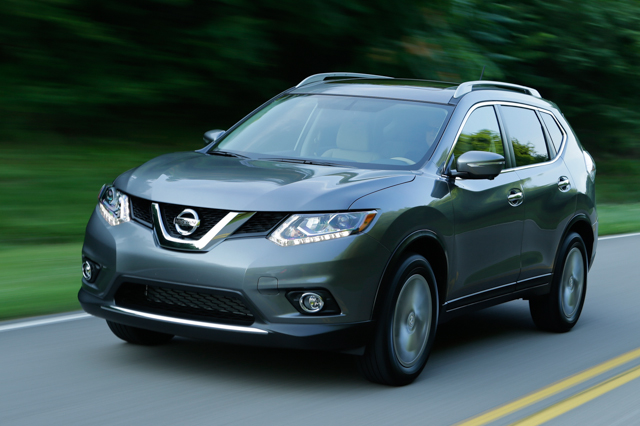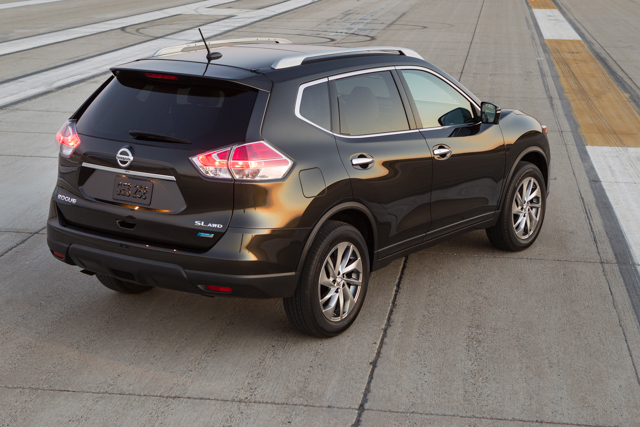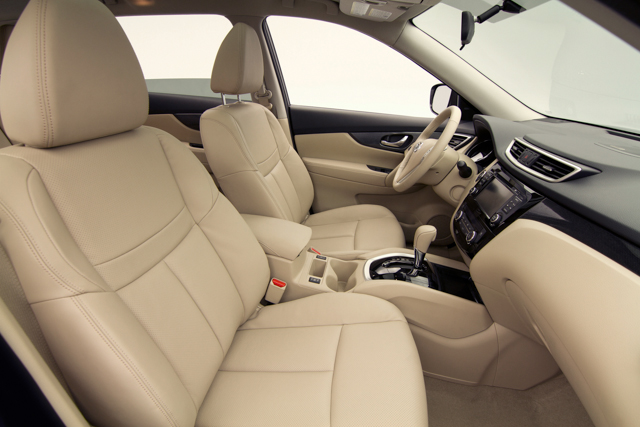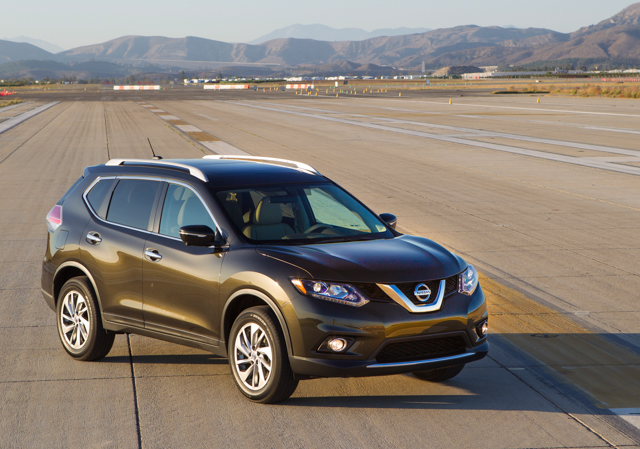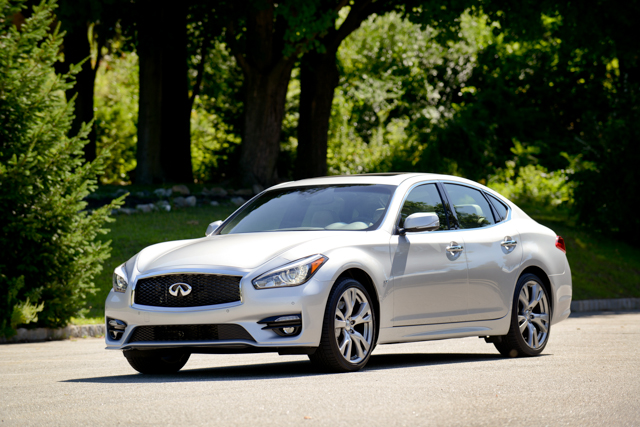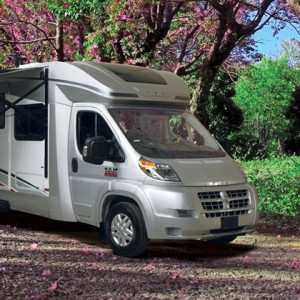To be honest, there’s not much that’s truly roguish about Nissan’s compact crossover. The
Rogue has been a friendly and affable little do-all since it was introduced in 2008, and the
redesigned second-generation model has become, if anything, even more civilized. Nissan’s
updated the styling and interior materials, bringing the car closer in attitude and looks to
the very suburban mid-size Murano.
This is a sensible vehicle playing in a very sensible niche. Essentially a city-bred
crossover that’s small enough to return decent fuel economy and nimble handling, the Rogue’s
popularity has grown along with the rest of its segment. It’s the second best-selling
Nissan in the U.S., in fact. Since growth means more competition–from cars like the Ford
Escape, Honda CR-V and Mitsubishi Outlander, among others–the Rogue has stepped up its game
for the second-generation model, which adds an available third-row seat and new infotainment
features to its repertoire.
The styling is evolutionary, but shows off the coming shift in Nissan’s design philosophy.
A narrow, chromy grille is the centerpiece, set into a deep grille that runs the width of
the Rogue’s face. The headlights are accented by boomerang-shaped LED running lights and
the Rogue has a distinct slope to the grille and windshield. It’s sporty for a crossover,
with touches of chrome here and there. It’s a very finished and high-quality look.
Beneath the skin, the Rogue features a number of aerodynamic tricks to help smooth its
progress through the air, including wind fairings under the body for the gas tank and
muffler. This improves efficiency and reduces interior noise on the freeway, and the
Rogue’s surprisingly quiet on the road.
Inside the Rogue, updated materials are the most noticeable change. Soft-touch materials
dominate the interior, now with warm colors and high-quality plastics giving the Rogue a
very upscale look inside. The interior style is simple without being Spartan, and the Rogue
feels a bit like a luxury vehicle compared to competitors like the Ford Escape and Honda
CR-V. Seating for four or five is comfortable, with all of the requisite cubbies and nooks
for hiding the things you’ll need for day-to-day errands. The overall look is very Murano-
lite. The seating is at a comfortable, just-right height as well. Heated seats are
available, and all of the Rogue’s seats fold for easy cargo carrying. The front passenger
seat folds backward for carrying long cargo. A new two-piece adjustable rear load floor
enables two-tiered loading at the back, or a lowered cargo floor for carrying taller items.
The slightly larger interior now has room for an optional third seat as well, increasing the
Rogue’s people-carrying capacity to 7–though at least two of them should be very short. A
panoramic moonroof is also available.
To aid in its suburban do-all mission, the Rogue has added a number of new high-tech
features. This little crossover benefits from trickle-down technology coming from Nissan’s
luxury cars, and available amenities now include the 360-degree Around View Monitor, a lane
departure warning system, navigation system, Bluetooth connectivity with hands-free text
messaging and streaming audio. The Around View Monitor also includes moving-object
detection, so the Rogue can alert the driver if another vehicle is moving into its space
from a blind spot in a parking lot. This goes hand in hand with the available Lane
Departure Warning and Forward Collision Warning systems. An upgraded Bose sound system and
leather interior are also available.
It looks good, but pavement-ripping acceleration is not the Rogue’s forte. With the 2.5
liter four-cylinder under the hood, the Rogue is leisurely at best. The engine produces a
modest 170 horsepower. It’s efficient, topping 30mpg on the freeway, but it’s not exactly a
powerhouse. A continuously variable transmission is standard. The CVT can be revvy, and
tends to highlight flat spots in the 2.5’s torque curve, especially when trying to pass on
the freeway. The CVT has a nifty engine-braking algorithm that kicks in to decelerate the
car gradually when coasting to a stop, saving the brakes. Active Ride Control is also
included, and adjusts engine torque to smooth the ride after large bumps, reducing head-
toss. All-wheel drive is available.
In the Rogue’s favor, it’s got a smooth and drama-free ride thanks to a fully independent
suspension. Like the Murano and Pathfinder, this crossover drives a bit bigger than it is,
seeming to waft over road irregularities rather than dealing with them head-on. The Rogue
feels soft, though not in a bad way. Nissan’s Vehicle Dynamic Control and traction control
keep things stable in both two- and four-wheel drive models.
Despite the brutish name, the Rogue is a very cooperative vehicle. This crossover’s name
could easily by the Agreeable Coworker. The new styling and interior appointments have
resulted in a vehicle that feels like much more than its $22,490 starting price. All-wheel
drive Rogues start at $23,840.

